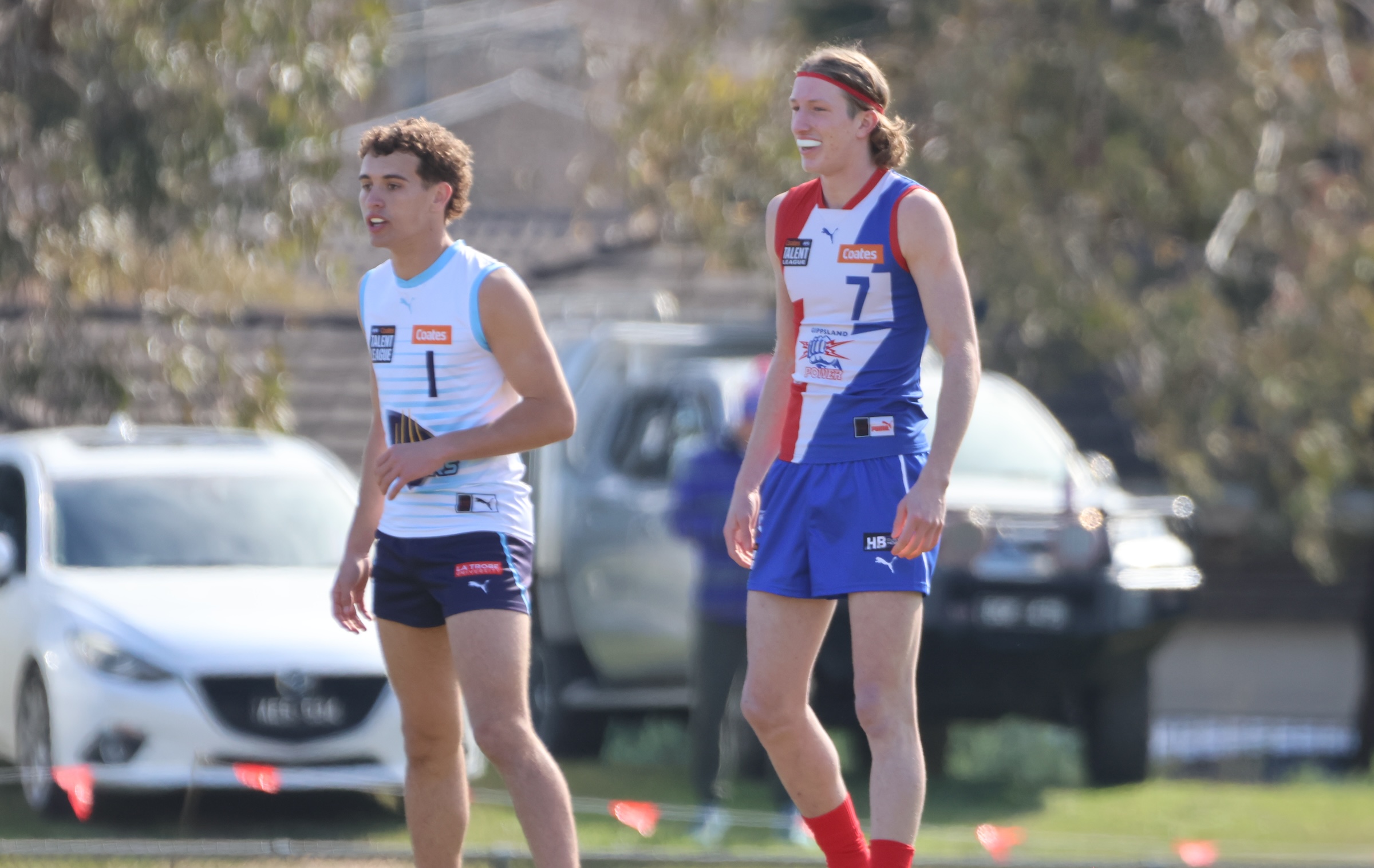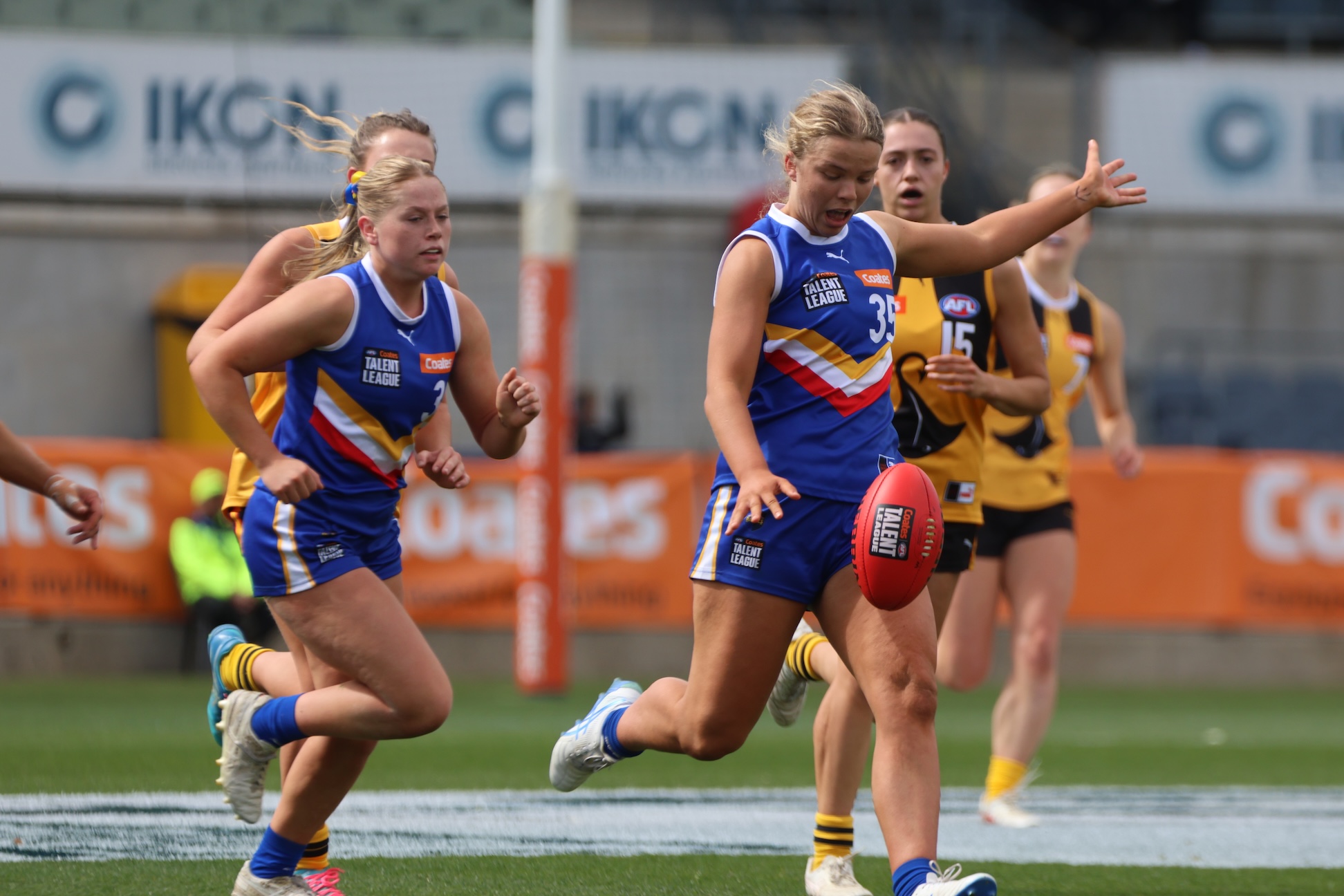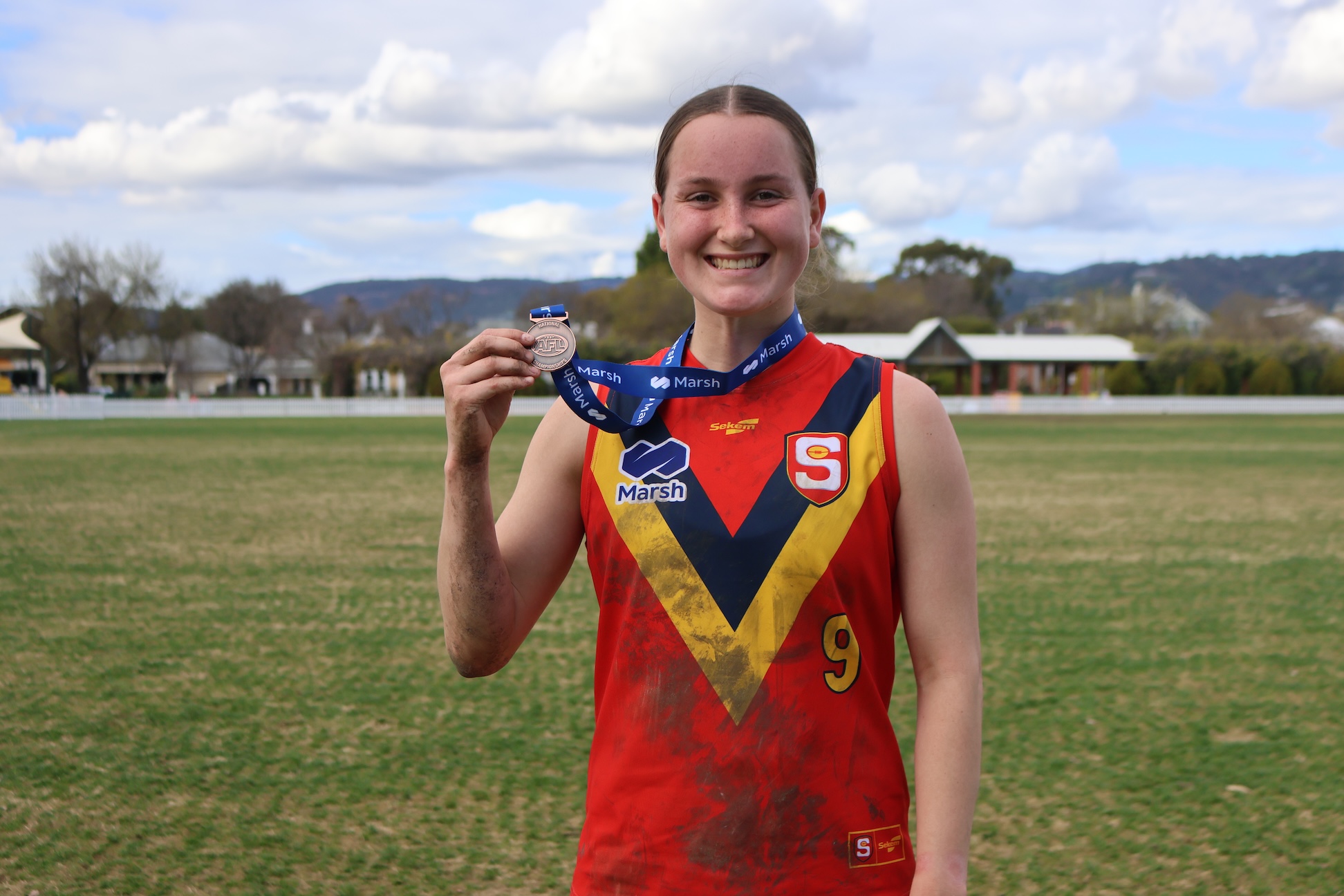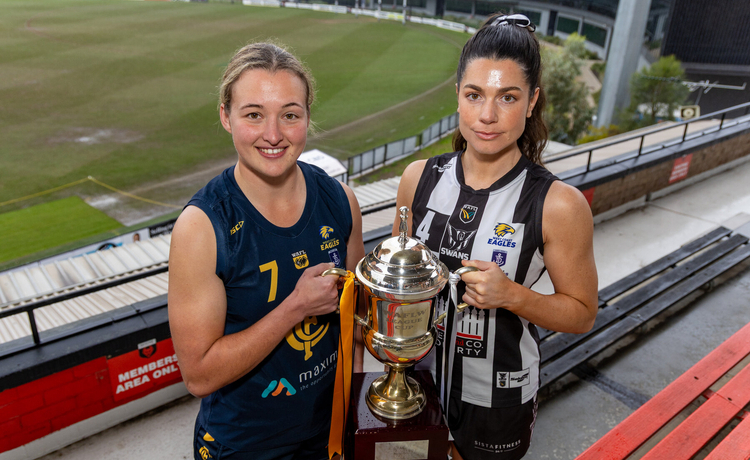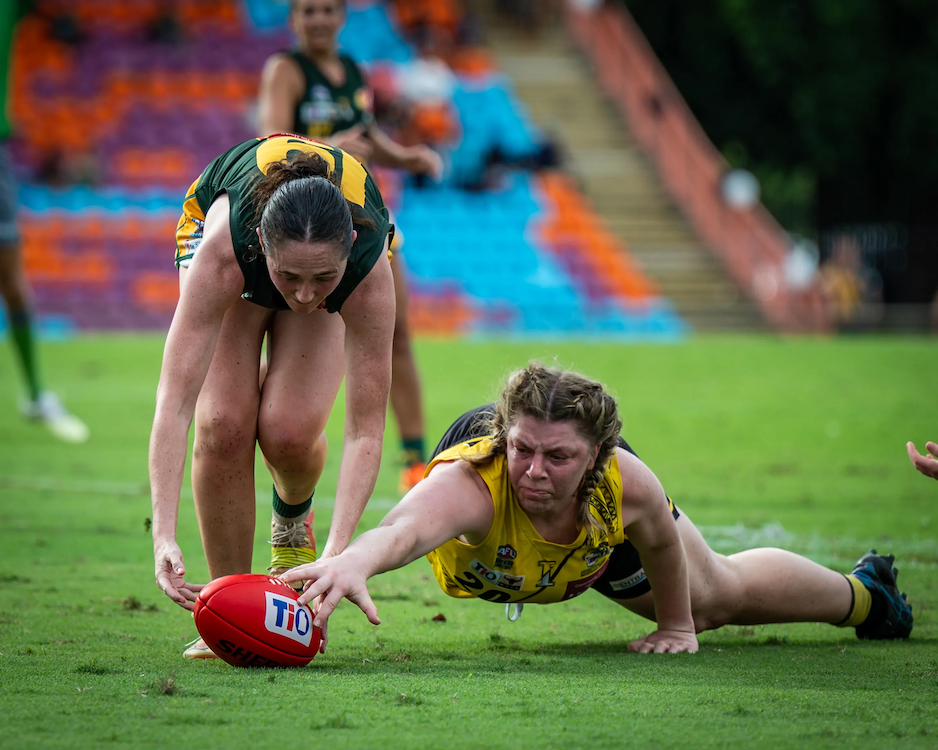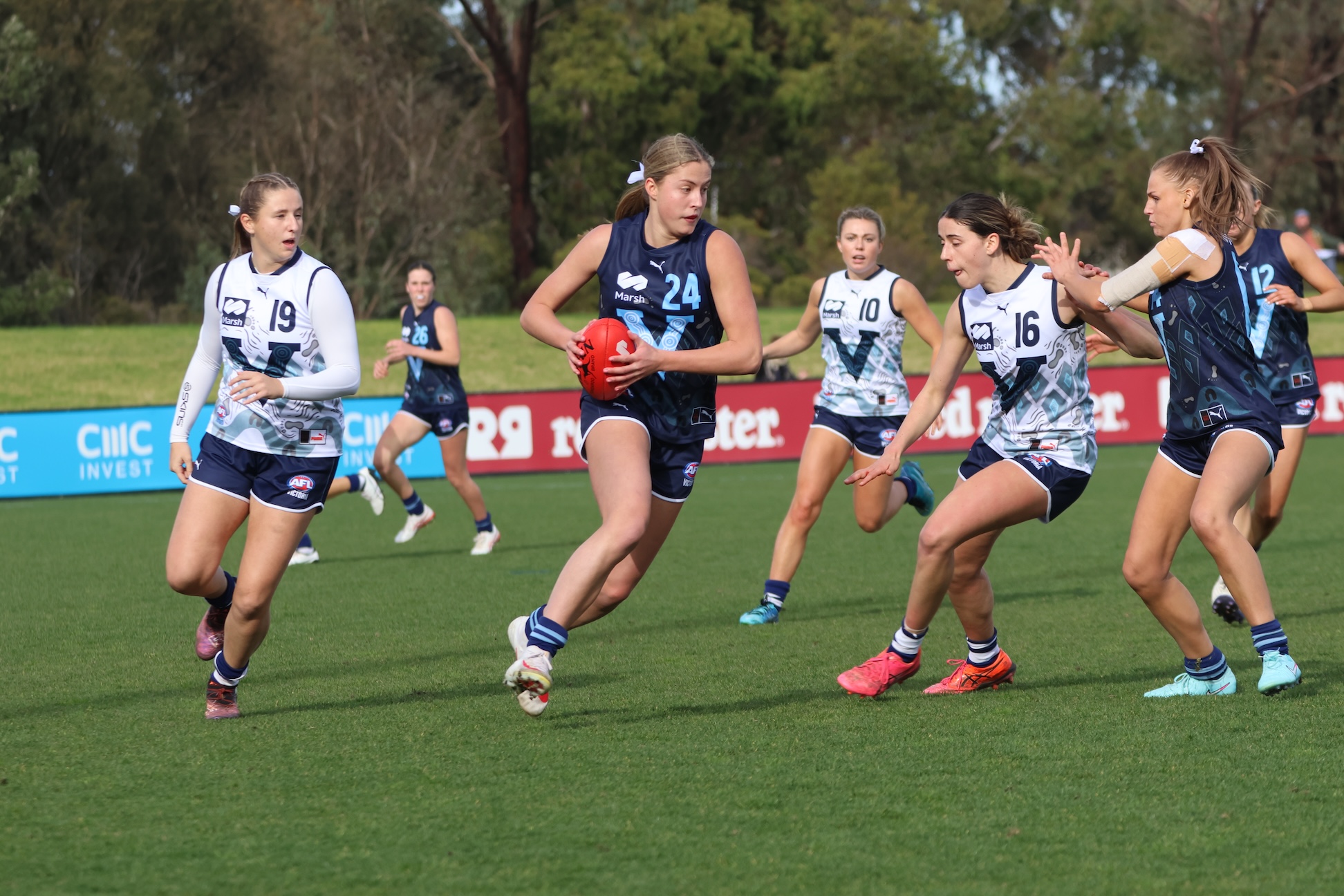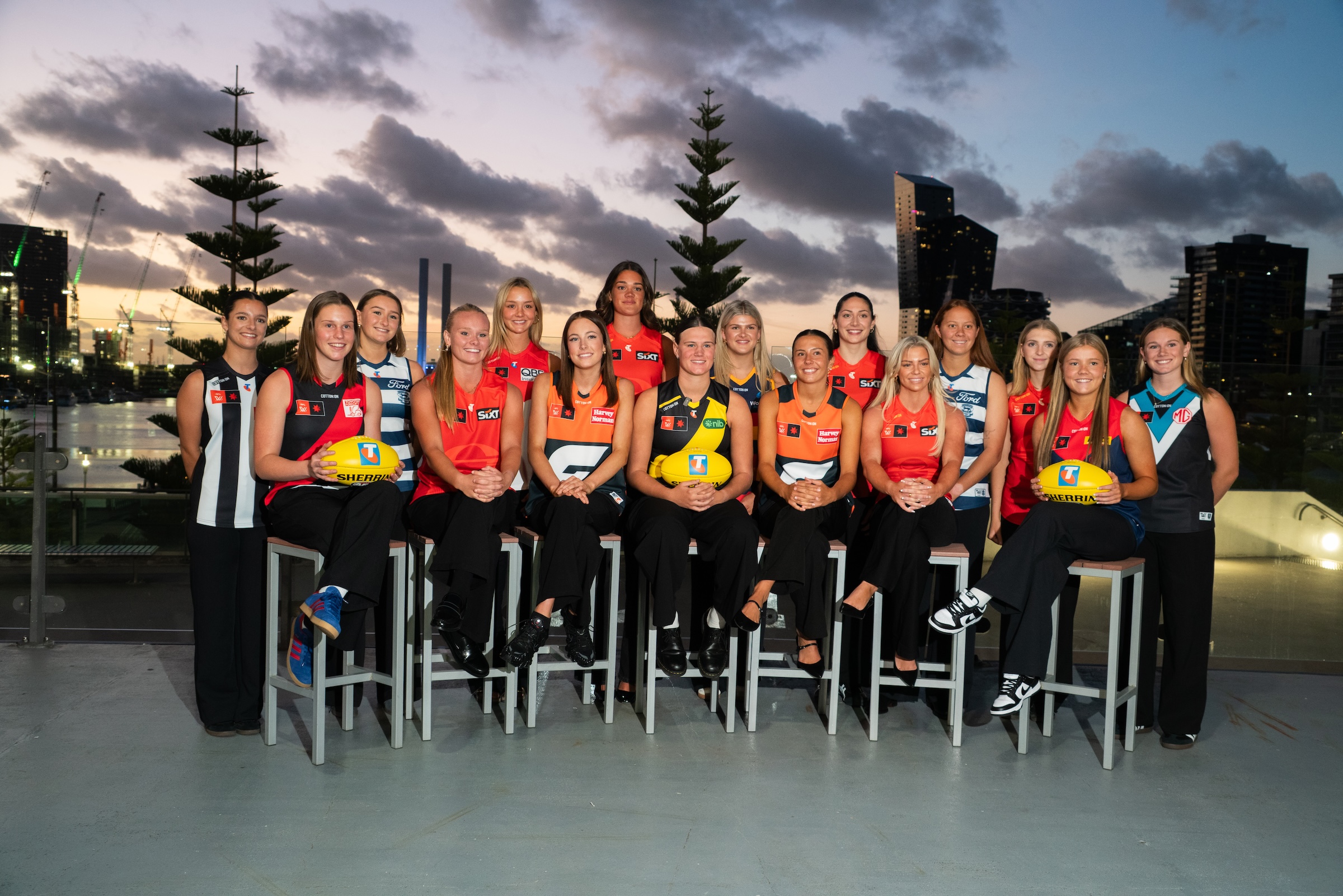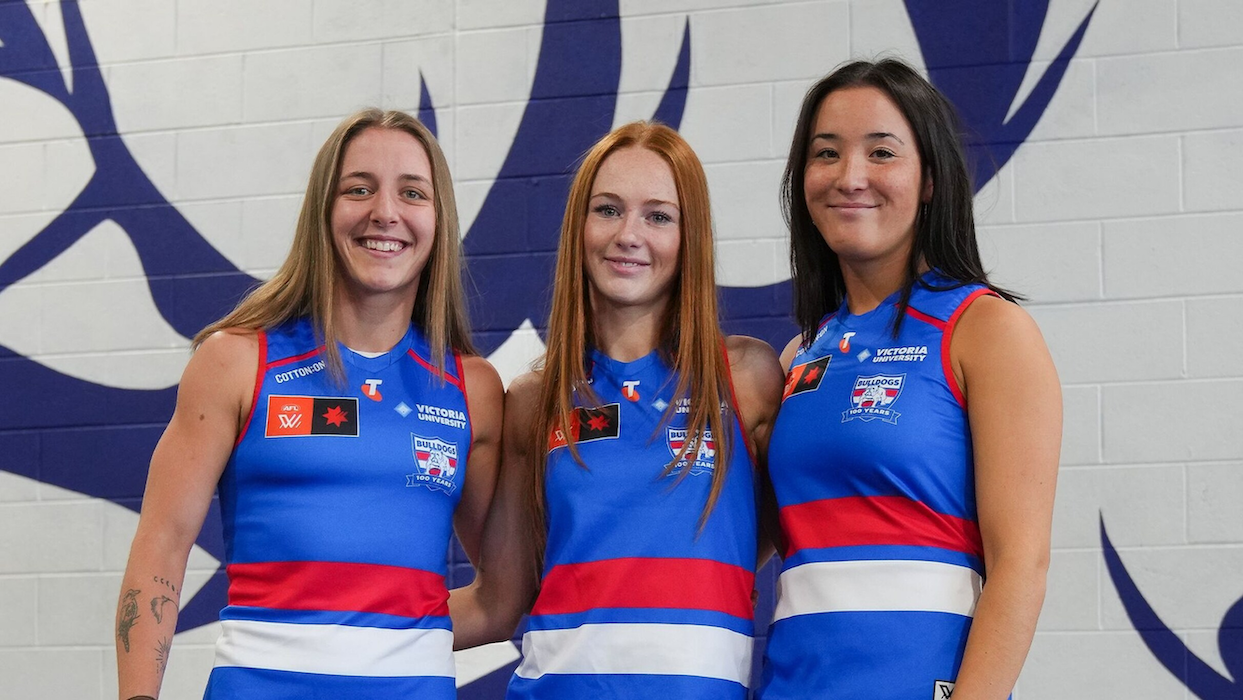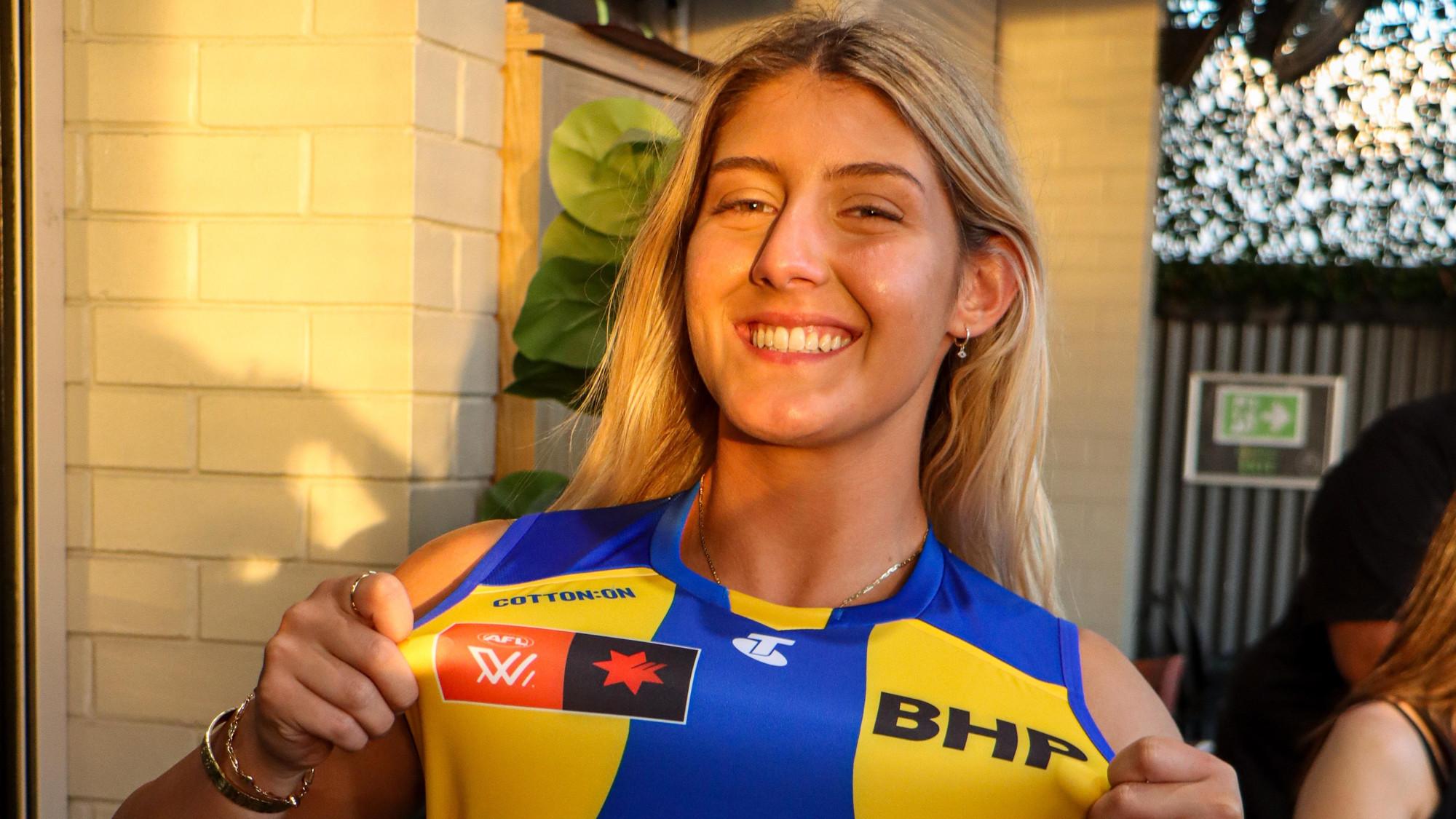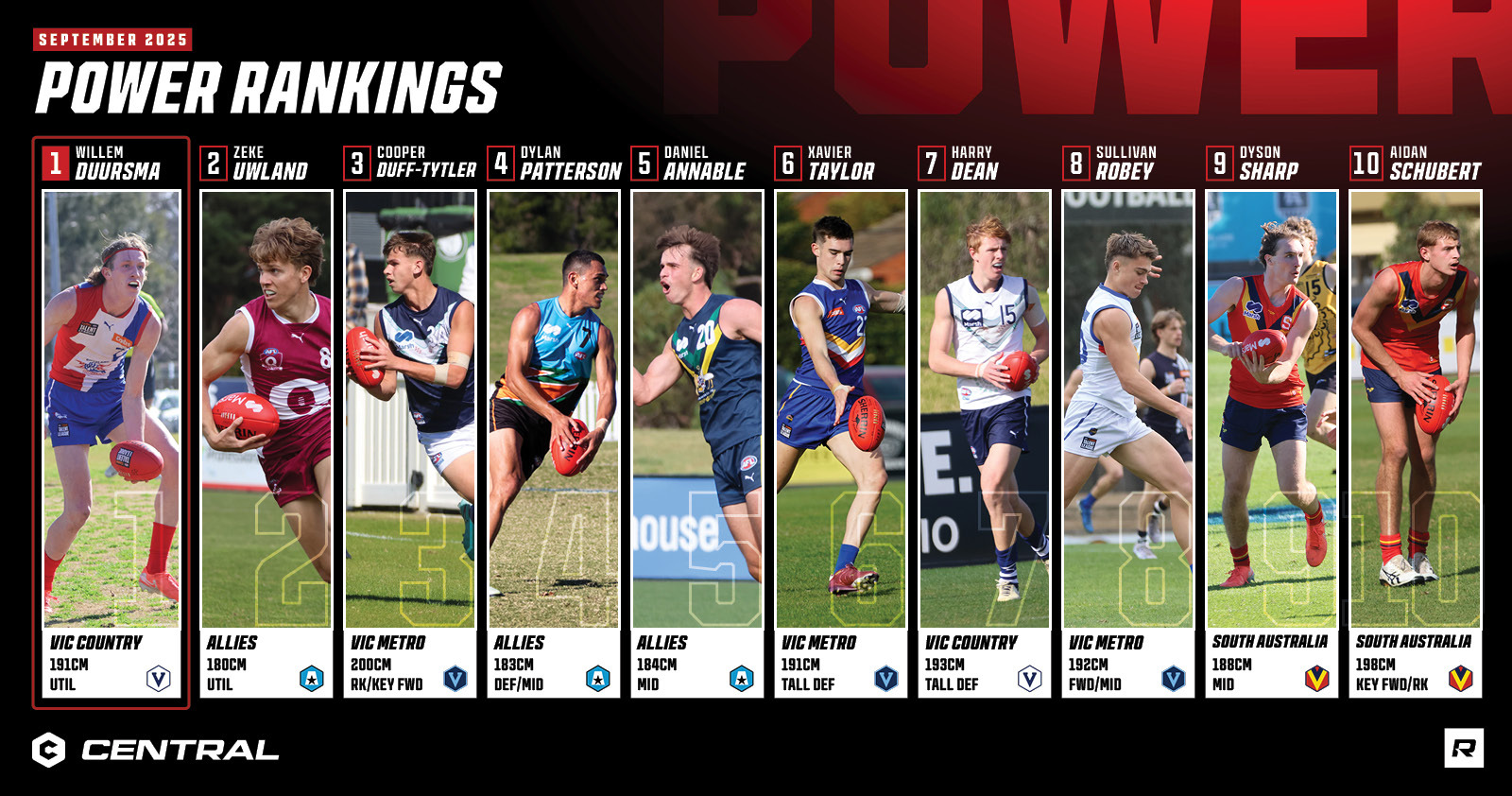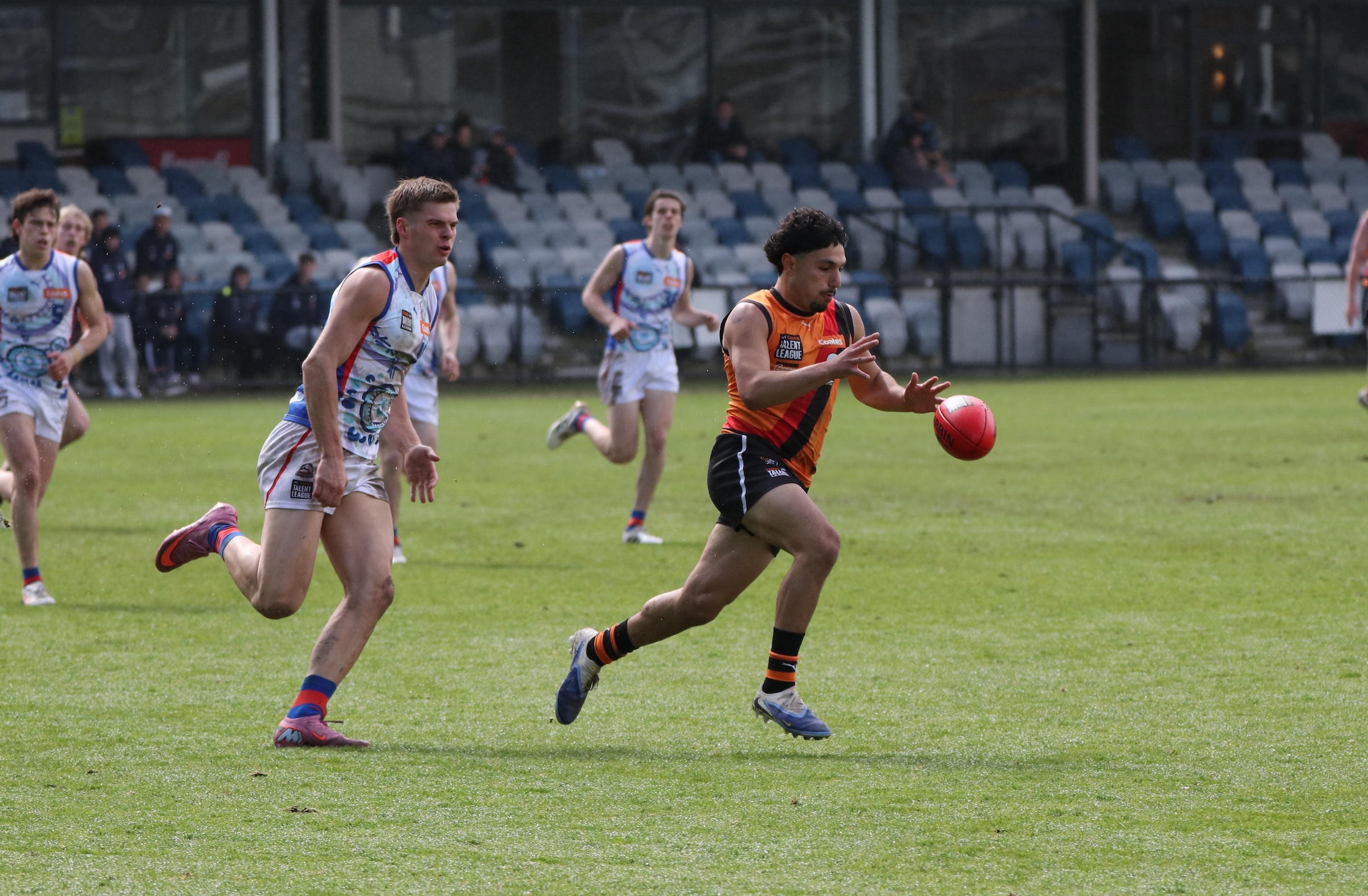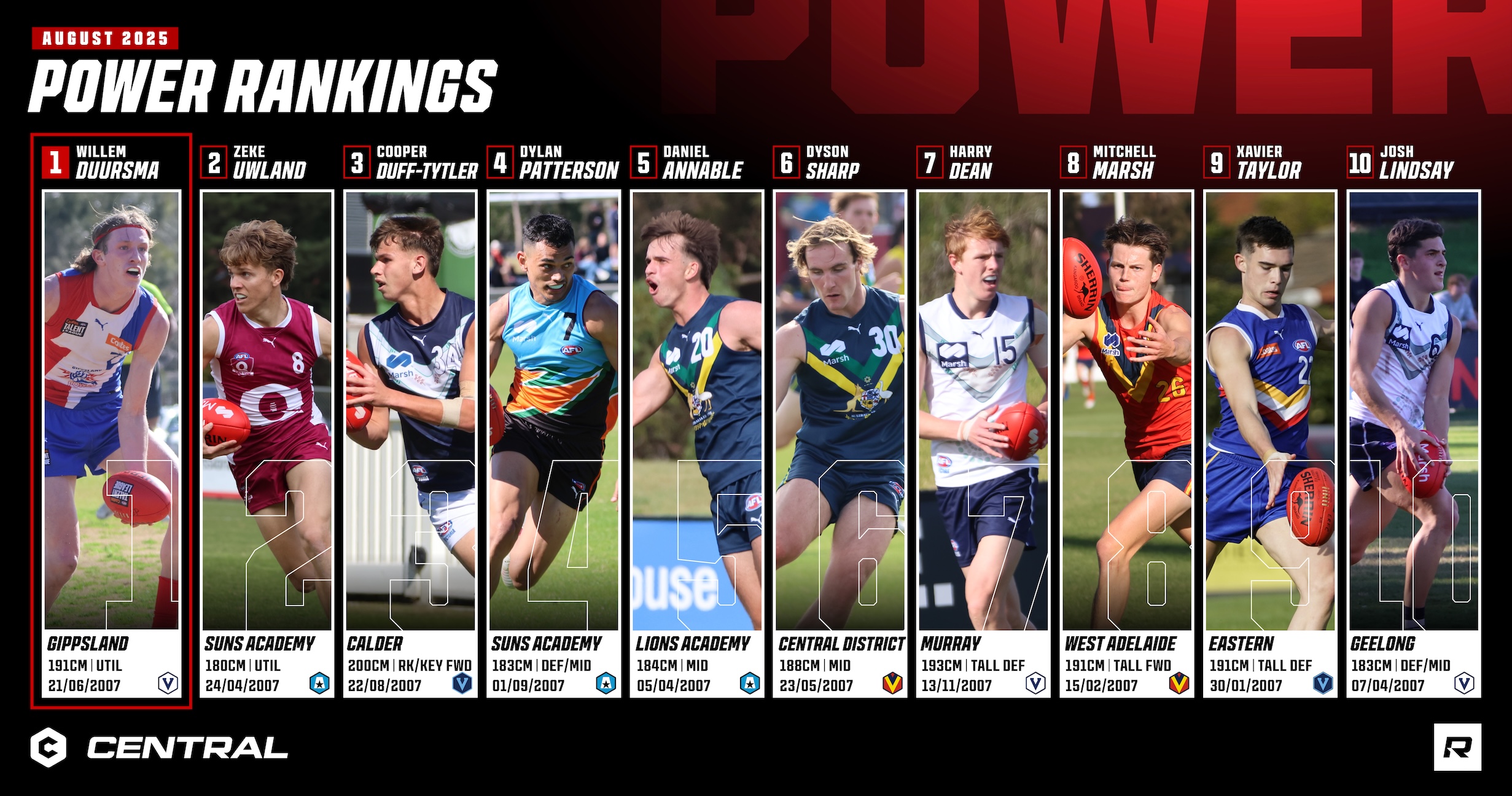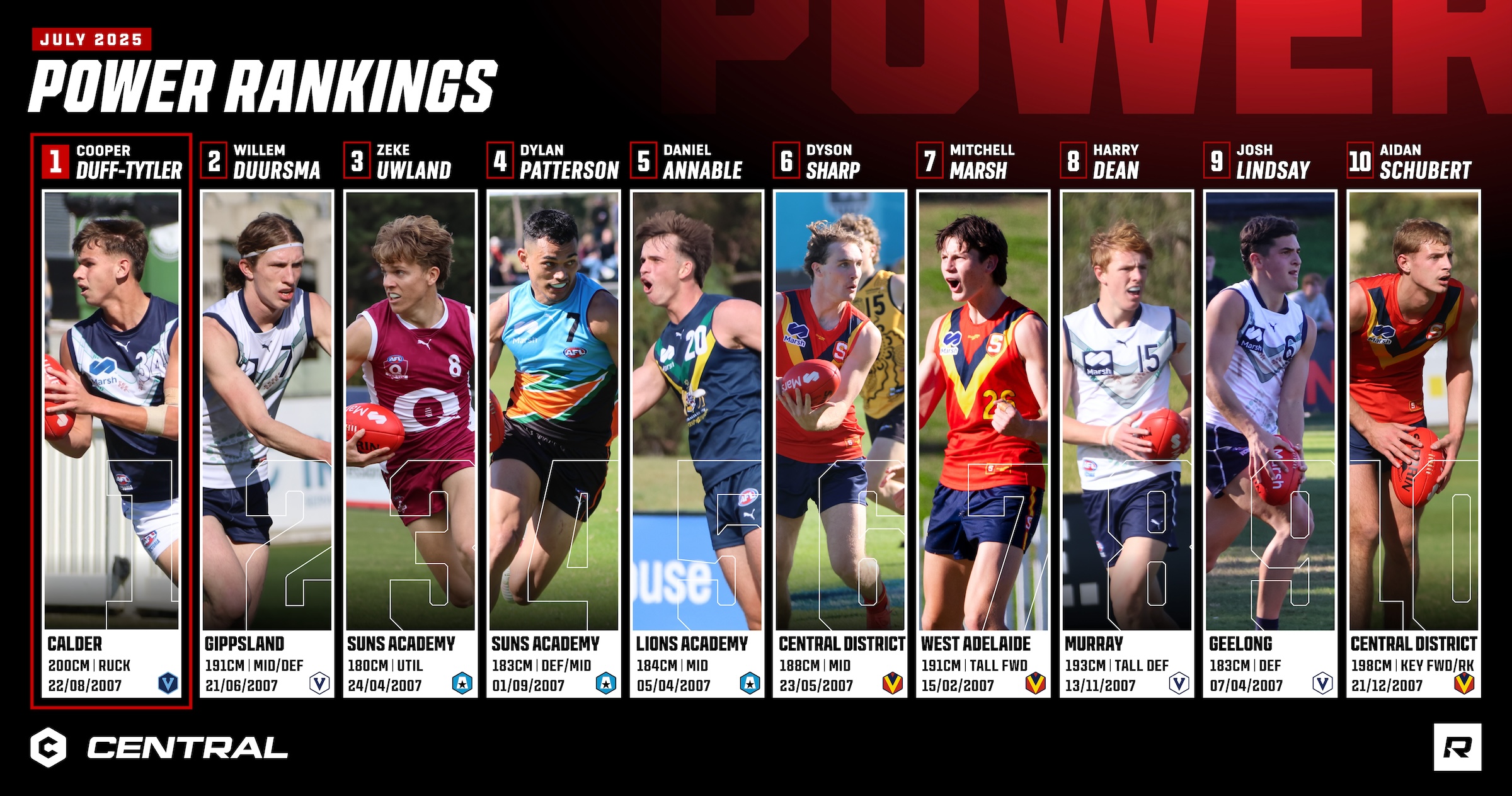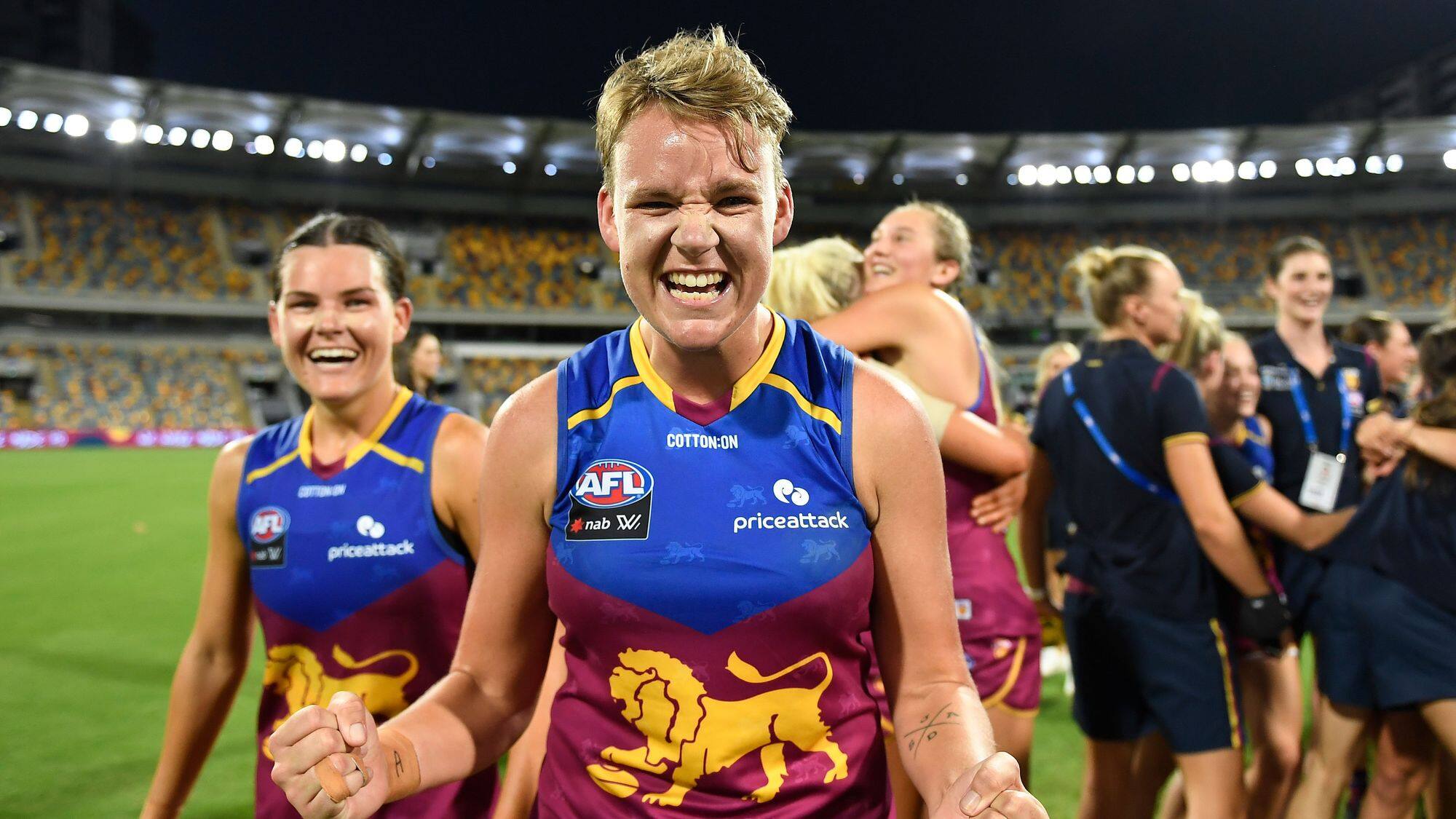AFLW Draft August Power Rankings | Talking Points

ON MONDAY, our most recent AFLW Draft Power Rankings were released for August, with the list extending out to 30 players after passing by the midway point of the AFLW Under 18 Championships. Though always a difficult task, there is more that goes into the list than just trying to order players based on ability and potential.
In our recent Game Sense Podcast, we ran through the list, order and those on the fringes in a state-by-state draft version. If you are after that, check it out below. This article will take a look at the talking points and themes of the rankings.
>> GAME SENSE PODCAST | 2023 AFLW DRAFT POWER RANKINGS: August
STABILITY AT THE TOP
Though there is always the temptation to reorder the top five or so players for the sake of change month on month, when there is no reason to, then stability is best. The top five – and even seven players – have really settled into those positions. One would be hard pressed to find a team who would not select number one Lauren Young with the first selection in an open draft.
In the podcast, we discussed the various challengers to that spot, and Shineah Goody is a clear number two. Piper Window (fourth) is wedged between the two Eastern Ranges talents in Alyssia Pisano (third) and Laura Stone (fifth). The other two who did not move were Tasmania’s Brooke Barwick (sixth) and Molly Brooksby (seventh).
THE NEED FOR SPEED
Looking through the Power Rankings, it is evident that speed, in particular explosive speed, is what gravitates players towards the tops of lists. There are two types of eye-catching speed, which is the powerful burst up against lightning quick burst. For example Window is the former, while Stone is the latter.
Both players are quick, but in this example, Window uses her burst along with her power because of her strength. Whereas Stone is lighter on her feet, and might not have the strength of Window, but is able to shrug off tackles through anticipating the play quickly and already taking off over those first few metres.
Ella Slocombe (eighth) and Elaine Grigg (10th) also have that explosive speed, while tall Kristie-Lee Weston-Turner‘s speed for a tall is incredible. Going through the top 20, Sienna McMullen (14th), Cleo Buttifant (15th) and Mikayla Williamson (16th) have that absolute explosive speed, while Kaitlyn Srhoj (17th), Sophie Peters (18th) and Lila Keck (19th) all share the ability to create their own space and have the smarts to get past opponents.
ATHLETIC TALLS ARE A PREMIUM
Being fast is one thing, but if you are 175cm and above, then that ticks another box completely. She might not be explosive, but West Australian Georgie Cleaver still moves like a midfielder and is incredibly athletic. At 181cm, she is a rare talent in that regard, with perhaps only her and the more explosive Weston-Turner as the key talls outside Young.
Buttifant has those athletic traits as well and can play as that rebounding tall defender, but is a touch under the key position height at 174cm. Further down the Power Rankings, the likes of Bryde O’Rourke (midfielder/forward, 176cm), Evie Long (175cm, forward/wing) and Rania Crozier (forward, 179cm) are all athletic talents with height.
CONSISTENCY STILL COUNTS FOR SOMETHING
Though athleticism is the key feature of the modern game, that is not to say that players without that explosive speed are not considered. In fact, there are a number of players with the Top 30 who break the mould. Perhaps the first is Brooksby at number seven, who is not slow, but not explosive, but she has outstanding footy IQ that enables her to glide through and pick the right options.
Tasmanian tall Georgia Clark is not as athletic as some of the other talls, but her hands are arguably the best in the draft pool behind Young. She can clunk just about everything that comes her way, and contested marking is another element within the game that is so crucial for sides given the ball spends a lot of time in marking contests.
From a midfield perspective, the likes of Brooke Boileau, Chloe Adams and Jaime Henry are not overly explosive, but all have their various strengths. Boileau can still move quickly because of her longer strides, and with her ability to find the ball well off hands at centre clearances, buys herself crucial extra seconds of time. Adams does her best work at the coal face and works incredibly hard to get to space, as does Henry who is one of the strongest midfielders out there and clean by hand.
DUAL-SIDED DIAMONDS
The pressure of the AFL Women’s means any players who can use both sides of their body effectively makes the such a valuable commodity. While the top-end players usually can use their opposite foot to a degree, there are some who standout in particular. Brooksby is the best at doing so, with her ability to get onto her left and still hit targets over long distances.
Adams is another who is more than capable of using either side of her body and is just so clean by hand or foot. Generally making good decisions, Adams is one who has a well-rounded complete profile outside that explosiveness than others ahead might have.
The third player to highlight is forward Lily Jordan. It is rare for a small forward to be able to use both sides of her body, but the GWV Rebels talent certainly does. Though a right footer, if forced onto her left, she can just as effectively hit targets. In fact she pinpointed Ash Centra twice in the loss to Queensland, once per foot.
INJURY ISSUES?
Injuries have to naturally come into calculations when considering rankings. The biggest announcement came preseason when Tasmanian Barwick declared she would miss the year due to an anterior cruciate ligament (ACL) tear. It was shattering news for a player who showed similar signs to that of Hawthorn top 10 pick Charlotte Baskaran for her offensive and defensive balance.
One player who is simply difficult to judge is Calder Cannons’ Amy Gaylor. Among the top 25 players heading into the year, she had some indifferent form to start the season, and then also unfortunately injured her knee. She would be right to go for preseason ahead of Season 8 if selected, and right now would be among the log-jam of players in that second to third round bracket. She has that explosive speed and is a contested ball winner, and is a definite draftable chance if she can bounce back well from that injury.
Throughout the season the likes of Weston-Turner (wrist), Slocombe (knee), Brooksby (knee and hamstring) have all had significant delays, while others such as Jess Rentsch (broken leg) and Henry (corkie) were recovering from long-term injury issues heading into 2023.
DEFENDERS A’ DOZEN
There is not too often when there are a plethora of medium to tall defenders floating around in a draft pool, but that tends to be the case in 2023. Among those defenders inside the top 30 are the likes of Buttifant, Rentsch, Kiara Bischa and Jemma Rigoni. All four have different levels of athleticism, while none are arguably the key position height, they are more than capable of playing on taller opponents.
In saying that, there are more than enough defenders to go around across the states. Victoria has the likes of Ava Campbell and Jemma Ramsdale among those in the mix. South Australia will have a choice of Alissa Brook and Lily Whitcombe, Western Australia has Mackenzie Webb, while Tasmanian defender/ruck Tunisha Kikoak is another high-upside prospect. Throw in AFLW Academy member Marnie Robinson and there is no shortage of talent in that regard.
FIND A (KEY) FORWARD
Up the other end of the field though, it gets a little trickier. Outside of Young, Weston-Turner, Clark and Cleaver, all of whom will be quickly snapped up by their respective states, there is a higher premium on finding a tall. Crozier has emerged this year as the number one option for Queensland, while Long – who is more of a wing-forward hybrid – is a player who clubs could turn to for the same service.
West Australian captain Anjelique Raison is the proper key position height and a contested marking talent She has also played in every position across the ground. Eastern Ranges forward/ruck duo Jess Vukic and Jacinta Hose – the latter is yet to play a game due to injury – are the other top-age duo in the mix. The majority of key forwards will likely come from state leagues as mature-agers.
HOW CAN THE RANKINGS CHANGE FROM HERE?
There is still plenty of time left in the season despite the conclusion fast approaching. There are three AFLW Under 18 Championships matches and finals series from the Talent League Girls, QAFL Women’s and AFL Sydney competitions still to come.
That will help shape the performance elements, while the testing events that will be held later at a to be determined date, will help shape the athletic elements. Good scores at those events are not relevant for everyone, especially not at the top-end. But for players who have been set the task of improving certain athletic traits, clubs will be looking carefully to see who has hit their personal bests.
Likewise, it is a great indicator for draft bolters who have not played a lot of football, to see just how well they test off the field. Testing results do not always mirror that of on-field application, but they do assist in the overall picture of the draftee.
